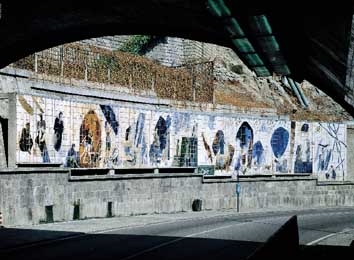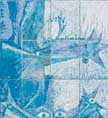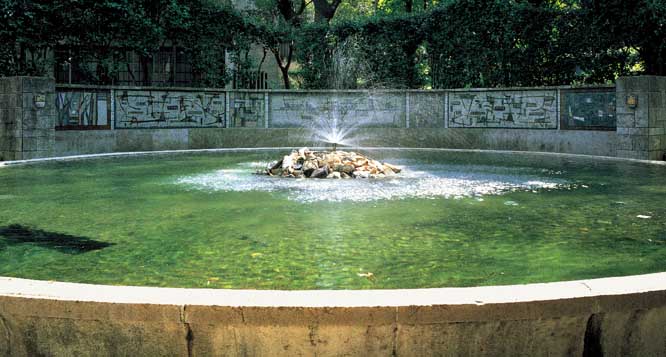|
|
|
|
|
|
|
|
|
|
|
|
 |
|
|
|
|
|
|
|
|
|
|
|
|
|
The XX Century
The 1950?s renewal:
the ceramists
|
 ollowing on from the recovery of the ceramic art begun by Jorge Barradas, a number of young artists like Manuel Cargaleiro (b. 1927) became interested in painting tiles and in exploring the plasticity of clay and the unexpected qualities of other materials. The latter can be seen in the plaques which Querubim Lapa (b. 1925) produced over a period of several decades beginning in the late 1950's. He applied visual thinking, which had already been employed in other forms of ceramics, to wall tiles. This technique was further developed by Cecília de Sousa (b. 1937) and Manuela Madureira (b. 1930), amongst others. ollowing on from the recovery of the ceramic art begun by Jorge Barradas, a number of young artists like Manuel Cargaleiro (b. 1927) became interested in painting tiles and in exploring the plasticity of clay and the unexpected qualities of other materials. The latter can be seen in the plaques which Querubim Lapa (b. 1925) produced over a period of several decades beginning in the late 1950's. He applied visual thinking, which had already been employed in other forms of ceramics, to wall tiles. This technique was further developed by Cecília de Sousa (b. 1937) and Manuela Madureira (b. 1930), amongst others.
From 1958 onwards the painter Júio Resende (b. 1917) worked in articulation with a number of modern architectural projects to build up a significant ceramic activity in Oporto. His figurative compositions on tiles and ceramic plaques culminated in 1985 with an immense panel entitled "Ribeira Negra".
|
|
|
|
 |
|
|
The "Ribeira Negra" Panel,
Júlio Resende, Oporto, 1983 · 1985.
photograph: Carlos Monteiro (DDF-IPM)
|
|
|
|
|
 |
|
|
 |
|
|
|
|
|
|
Casa da Sorte,
Lisbon, Querubim Lapa, 1963.
photograph: Paulo Cintra and Laura Castro
|
|
|
|
|
|
|
|
|
|
|
|
 |
|
|
|
|
|
Almada public gardens,
Manuel Cargaleiro, 1956.
photograph: Paulo Cintra and Laura Castro Caldas
|
|
|
|
|
|
|
|
|
|
|
|
© Instituto Camões, 2000
|
|
|